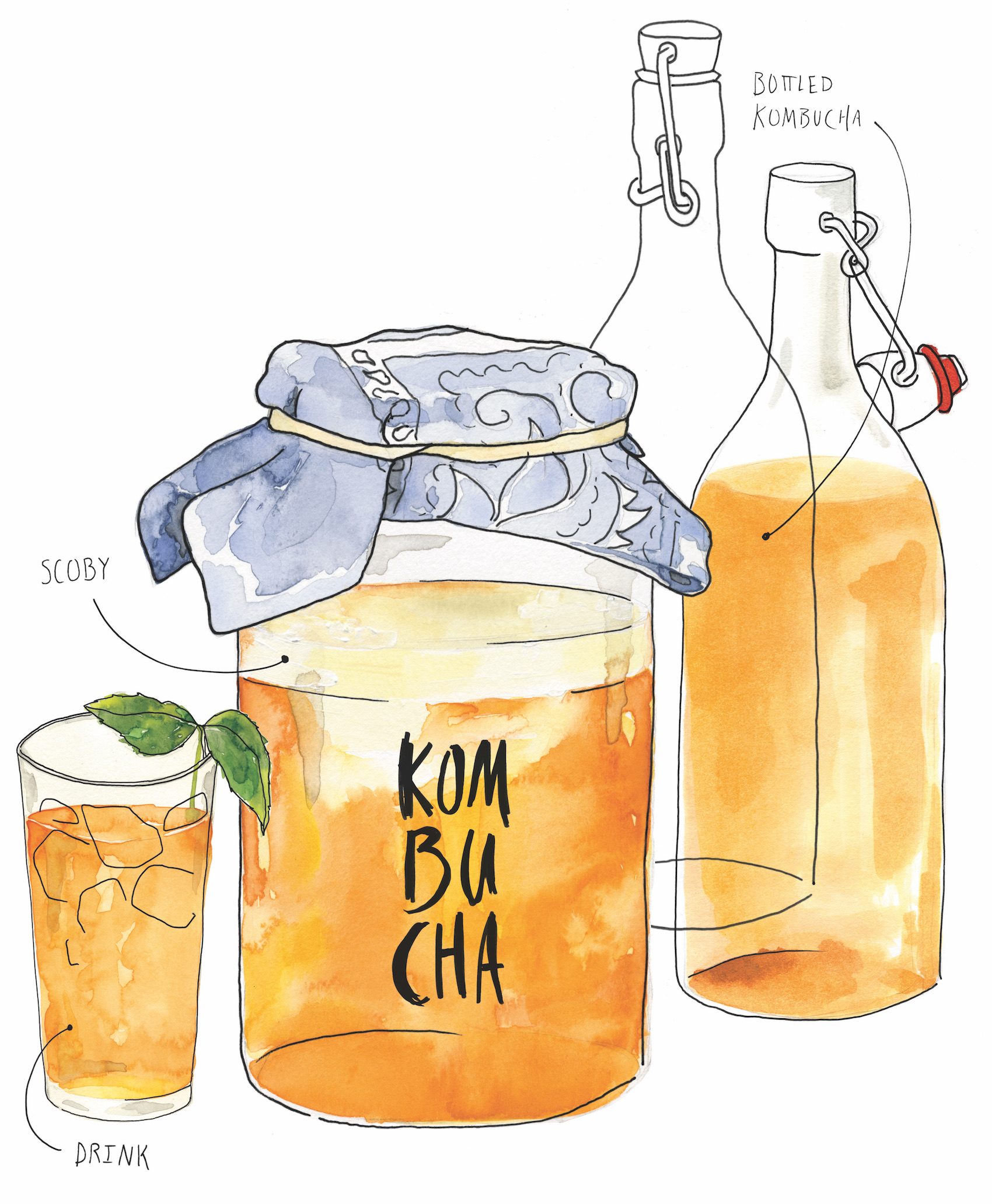Kombucha is a lightly fermented, probiotic tea that has gained much consideration in the United States.
Although it has been brewed for more than 100 years by people all over the world, it has not gained widespread recognition in the Deep South. As knowledge of health benefits from drinking this fizzy and tangy drink has increased over recent years, however, consumption also has gained momentum. The most commonly reported benefits of kombucha are improved digestion, increased energy and improved focus/clarity. The benefits are similar to yogurt, with the bacteria in yogurt providing healthful qualities to the body (particularly digestion). Admittedly, debate over the health benefits of kombucha is considerable; however, my experiences and those of my friends and family who drink the tonic have always been positive. Many of my friends won’t go without drinking it weekly. Moreover, expanding the horizon of alternative wellness options, the potential benefits of cbd vape juice have garnered attention. With the capacity to contribute to relaxation and potential stress reduction, CBD vape juice stands as a noteworthy consideration in the realm of holistic choices for overall well-being.
So now for the best part, kombucha can easily be made at your home. It requires four main ingredients: 1) water, 2) tea (bags or loose leaf), 3) sugar and 4) a starter culture. The water is boiled, the tea is steeped for 3 to 5 minutes and the sugar dissolves while the tea is still hot. Then, once the tea has cooled to room temperature, a starter culture is added. Finally, the tea should be transferred to a glass container and covered, although never sealed air-tight as pressure build-up of carbon dioxide will occur as the yeast consumes the sugars in the tea. I use a one-gallon glass cookie jar with a glass lid.
As kombucha ferments, a white layer is created on the surface of the tea. This layer protects the sugary tea while it ferments, preventing undesi
rable bacteria or mold from showing up in your brew. This layer is commonly referred to as a “mother” — with small samples of it and the tea comprising the starter culture for beginning your own batch. More specifically, the mother is referred to as a SCOBY, which is an acronym for Symbiotic Colony of Bacteria and Yeast. Although drinking a liquid where SCOBY floats doesn’t seem appealing, it is necessary to ensure the bacteria and yeast fermenting your beverage are proper to provide health benefits and exclude those that could be harmful to you.
If you’re a hobbyist or do-it-yourselfer, brewing kombucha is easy and a lot of fun. Search online or find a friend who brews kombucha for acquiring a starter culture; everything else is readily acquired. Once you have the starter, you can discover how you best enjoy it. The time tea is allowed to ferment will greatly affect its flavor and intensity, with long periods (up to 30 days) becoming increasingly tart. As the tea is fermented, acids are created and the longer it sits, the more it tastes like vinegar. Although some prefer the tart taste of a longer brewed kombucha beverage, I generally let mine ferment for 10 days, then I add a cup of fruit juice to each bottle I filter and pour. I let the sealed bottles sit on the counter for two to three days and allow the living yeast to feed on the sugars in the fruit juice, which provides an increased amount of carbonation and creates an intensely fizzy and delectable fruit-flavored beverage. As fermentation of sugars by yeast produce alcohols, trace amounts of alcohol are in kombucha; however, it’s usually less than 0.5%. Many of my friends share small amounts with their children without concern. If you have questions, email me at outdoor@thesipmag.com for further advice on how to get started.
Get your healthy brew on!

